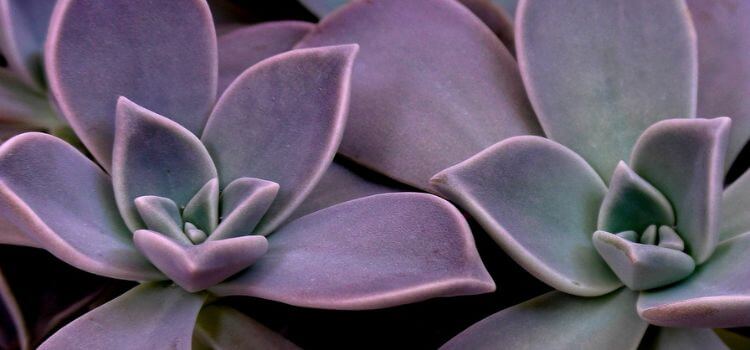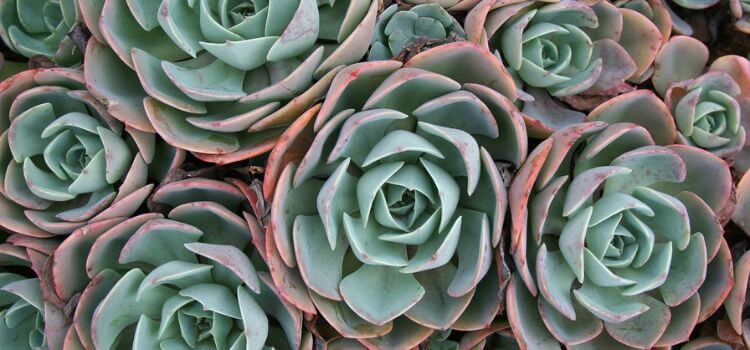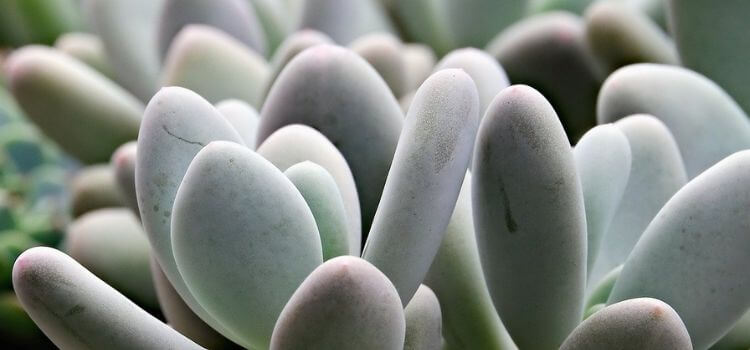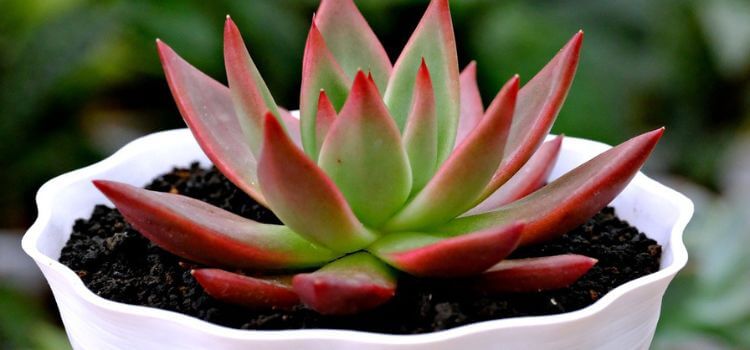As an Amazon Associate, I earn from qualifying purchases.
Depending on the species and care, succulents can live between 5 to 25 years. Proper care significantly extends their lifespan.
Succulents are famous for their striking appearance and low-maintenance nature. These resilient plants thrive in various environments and are perfect for busy individuals. They store water in their leaves, making them drought-tolerant and easy to care for. Succulents come in multiple shapes, sizes, and colours, adding aesthetic value to homes and gardens.
These plants can flourish for many years with minimal watering and proper sunlight. Their longevity and versatility make succulents an excellent choice for novice and experienced gardeners. Knowing the specific needs of your succulent species ensures they thrive and live a long, healthy life.
Factors Affecting Succulent Lifespan
Succulents are known for their long lifespan and resilience. These plants can live for many years with proper care. Several factors impact their longevity. Understanding these factors can help you grow healthy succulents. This guide explores the main factors that affect how long succulents live.
Climate
Climate plays a significant role in the lifespan of succulents. These plants thrive in warm and dry conditions. Extreme cold can damage or kill them. Most succulents prefer temperatures between 60°F and 80°F. Frost can be deadly for many types of succulents.

Some varieties can tolerate mild frost but still need protection during extreme cold periods. Humidity is another crucial factor. Too much humidity can lead to rot and fungal diseases. Succulents do best in low-humidity environments. In regions with high humidity, ensure proper air circulation around the plants.
To ensure your succulents thrive:
- Could you keep them in warm, dry areas?
- Protect them from frost.
- Maintain low humidity levels.
- Ensure good air circulation.
Watering
Watering is crucial for the health of succulents. Overwatering is the most common cause of succulent death. These plants store water in their leaves, stems, and roots. They need less water than other plants. Watering frequency depends on the season.
During the growing season (spring and summer), water them every 1-2 weeks. Water them once a month or less in the dormant season (fall and winter). Always let the soil dry out completely between waterings. Use the “soak and dry” method. Soak the soil thoroughly, then dry it out completely before watering again.
Signs of overwatering:
- Yellowing leaves.
- Mushy or translucent leaves.
- Roots and stems may rot.
Light Exposure
Light exposure is essential for succulent growth. These plants love bright light. Most succulents need at least six hours of sunlight daily. Place them near a south-facing window for the best results. Some varieties can tolerate partial shade.
Watch for signs of too much direct sunlight. Leaves may become sunburned. They will show brown or white spots. If your succulent is not getting enough light, it may become “leggy.” This means it will grow tall and thin as it stretches towards the light. Use grow lights if natural light is insufficient.
Critical points for light exposure:
- Provide at least six hours of sunlight daily.
- Place near a south-facing window.
- Watch for signs of sunburn.
- Consider growing lights for low-light environments.
Soil Type
Soil type affects the health and longevity of succulents. These plants need well-draining soil, while regular potting soil retains too much moisture. Use a mix designed for cacti and succulents, or you can make your own.
Combine regular potting soil with sand and perlite. This ensures good drainage and prevents root rot. The right soil mix helps the roots breathe. Avoid using garden soil, as it is too dense for succulents.
Recommended soil mix:
| Ingredient | Proportion |
|---|---|
| Potting Soil | 2 parts |
| Sand | 1 part |
| Perlite | 1 part |
Pests And Diseases
Pests and diseases can shorten the lifespan of succulents. Common pests include mealybugs, aphids, and spider mites. These pests feed on the plant’s sap, weakening it. Inspect your succulents regularly for signs of pests. Look for tiny insects, white cottony spots, or webbing. Use insecticidal soap or neem oil to treat infestations.
Fungal diseases can also affect succulents. Overwatering and poor drainage are common causes. Signs of a fungal infection include black spots, mushy leaves, and mould growth. Ensure proper watering and good airflow to prevent fungal issues.
Preventive measures for pests and diseases:
- Inspect plants regularly.
- Use insecticidal soap or neem oil for pests.
- Avoid overwatering.
- Ensure good air circulation.
Common Succulent Lifespans
Succulents are popular plants known for their unique ability to store water in their leaves, stems, or roots. This feature makes them incredibly hardy and low maintenance. But how long do succulents live? The lifespan of succulents can vary widely depending on the type, care, and environment.
Short-lived Succulents
Some succulents have shorter lifespans, often living only a few years. These succulents may not last long, but they are still beautiful and rewarding to grow. Short-lived succulents can include:
- Sedum – Many varieties of Sedum are short-lived, typically lasting 3-4 years.
- Echeveria – While some Echeveria can live longer, many species only last around three years.
- Aeonium – Most Aeoniums have a 2-3 years lifespan, depending on care.
Short-lived succulents often bloom and die but can produce offsets or “pups” that continue the plant’s legacy. These offsets can be replanted to grow new succulents, ensuring you always have a fresh, thriving plant to enjoy. Regular care and attention can help maximize their lifespan.
Medium-lived Succulents
Medium-lived succulents can live between 5-10 years. These plants offer a balance between longevity and ease of care. Examples of medium-lived succulents include:
- Haworthia – Typically lives for about 5-7 years.
- Gasteria – Can live up to 10 years with proper care.
- Kalanchoe – Often has a lifespan of around 6-8 years.
These succulents are known for their resilience and can thrive in various environments. They may require occasional repotting and consistent watering to reach their entire lifespan. Proper sunlight and well-draining soil are crucial for their growth and longevity. With the appropriate care, these succulents can be a long-term addition to your plant collection.
Long-lived Succulents
Some succulents can live for many decades, becoming almost like family heirlooms. Long-lived succulents include:
- Aloe Vera – Known to live up to 25 years.
- Jade Plant (Crassula ovata) – Can live for over 100 years.
- Agave – Some species can live up to 30 years.
These succulents often grow slowly and can become quite extensive over time. Regular care, including proper watering, sunlight, and occasional feeding, can help them thrive for many years. They are often passed down through generations, becoming a cherished part of the family. Their impressive lifespans make them a rewarding investment for any plant enthusiast.
Tips For Increasing Succulent Lifespan
Succulents are famous for their unique look and low maintenance. Many people love these plants. But how long do succulents live? The lifespan of succulents varies. Some live for a few years. Others can live for decades. The key to a long life is proper care. This post will share tips for increasing the lifespan of your succulents.

Proper Watering
Watering is crucial for succulent health. Too much or too little water can harm them. Succulents store water in their leaves. This means they don’t need frequent watering. Overwatering is the most common mistake. It can cause root rot and kill the plant. Underwatering can also be harmful. The leaves will wilt and dry out.
Here are some watering tips:
- Water only when the soil is arid.
- Use a pot with drainage holes.
- Water deeply but infrequently.
- Avoid getting water on the leaves.
Seasonal changes affect watering needs. In summer, water more often. In winter, reduce watering.
Appropriate Lighting
Light is another crucial factor for succulents. These plants love sunlight, and bright, indirect light is ideal. Direct sunlight can burn their leaves, and not enough light can make them stretch and become leggy.
Here are some lighting tips:
- Place succulents near a sunny window.
- Rotate the plant for even light exposure.
- Use grow lights if indoor light is limited.
Outdoor succulents need different care. Gradually move them to sunny spots. This prevents sunburn. Always check the light requirements for your specific succulent. Some need more shade.
Choosing The Right Soil
Soil choice impacts succulent health. Well-draining soil is a must. Regular potting soil holds too much water. This can cause root rot. A unique succulent mix is better. It has good drainage and aeration.
Repotting is also essential. Succulents should be repotted every 1-2 years. This refreshes the soil and provides more space for roots. Always use a pot with drainage holes.
Preventing Pests And Diseases
Pests and diseases can shorten a succulent’s life. Common pests include mealybugs, aphids, and spider mites. They can damage leaves and spread diseases.
Here are some prevention tips:
- Inspect plants regularly for signs of pests.
- Isolate new plants before adding them to your collection.
- Use neem oil or insecticidal soap for treatment.
Overwatering causes diseases like root rot. Ensure proper watering and soil drainage. Remove and discard infected parts of the plant. Clean pots and tools to prevent disease spread.
Signs Of Aging In Succulents
Succulents are known for their resilience and long lifespan. Many enthusiasts wonder, “How long do succulents live?” While some may thrive for decades, others may show signs of ageing sooner. Recognizing these signs can help you care for your plant better. Here, we discuss the signs of ageing in succulents and how to identify them.
Stem And Leaf Changes
As succulents age, their stems and leaves often change. These changes can be subtle or quite noticeable. Older leaves may start to turn yellow or brown at the edges. They might even drop off more frequently. The stems can become woody and thicker.
Some common changes include:
- Thicker stems that appear more rigid.
- Dropping leaves that were once vibrant and green.
- Colour changes in leaves, such as yellowing or browning.
New growth at the top can indicate that the plant is still healthy. However, the base may show more signs of ageing. Trimming off the older parts can rejuvenate the plant. This helps in maintaining a fresh appearance.
Flower Production
Flower production is another indicator of a succulent’s age. Older succulents may produce fewer flowers than younger ones, and the flowers might also be less vibrant in color. This can be a sign that the plant is diverting energy elsewhere.
Factors affecting flower production include:
| Factor | Impact on Flowering |
|---|---|
| Age of the plant | Older plants produce fewer flowers. |
| Soil quality | Poor soil can reduce flower production. |
| Light exposure | Insufficient light affects flowering. |
Ensuring good care can help sustain flower production. This includes providing adequate light, water, and nutrients. Proper care can help even older succulents bloom occasionally.
Offset Growth
Offset growth is a natural process in succulents. Offsets are new plants that grow from the base or sides of the parent plant. As succulents age, they may produce more offsets. This is their way of ensuring survival.
Benefits of offset growth include:
- Easy propagation for new plants.
- Increased plant volume in the pot.
- Extended life of the succulent through new growth.
Offsets can be separated and planted individually. This encourages the parent plant to focus on new growth and allows you to expand your succulent collection without buying new plants.
Understanding these signs helps in providing better care. Recognizing ageing in succulents ensures they remain healthy and vibrant for years.
How To Promote Succulent Longevity
Succulents are popular plants due to their unique appearance and low maintenance. With proper care, they can live for many years. Knowing how to promote succulent longevity is essential for any plant lover. This guide will cover the critical aspects of propagation, pruning, and transplanting to help your succulents thrive.
Propagation
Propagation is a great way to increase your succulent collection and ensure plant longevity. There are several methods for propagating succulents, each with unique steps and benefits.
Leaf Propagation is one standard method. To propagate using leaves:
- Gently twist a healthy leaf from the parent plant.
- Let the leaf dry for a few days until the end calluses are over.
- Place the leaf on well-draining soil.
- Wait for roots and small rosettes to grow.
Another method is stem cuttings. Here’s how to do it:
- Cut a healthy stem from the parent plant.
- Allow the cutting to dry and callus for a few days.
- Plant the stem in well-draining soil.
- Water sparingly until roots develop.
Propagation is easy and fun. It allows you to enjoy more succulents without spending extra money.
Pruning
Pruning helps keep your succulents healthy and attractive and encourages new growth. It is also essential for removing dead or damaged parts.
Steps to prune succulents:
- Use clean, sharp scissors or pruning shears.
- Cut away dead or dying leaves and stems.
- Trim leggy growth to encourage bushier growth.
- Remove any pests or diseased parts immediately.
Always sterilize your tools before and after pruning. This prevents the spread of disease. Pruning is not just about looks; it’s about keeping your plant healthy and robust.
Regular pruning can also help in shaping the succulent. This ensures it fits well in your space. Never be afraid to prune. It’s an essential part of succulent care.
Transplanting
Transplanting is necessary for the health and growth of your succulents. It helps in refreshing the soil and giving roots more space to grow. Transplanting should be done carefully to avoid damage.
Steps to transplant succulents:
- Choose a pot with good drainage.
- Fill it with well-draining succulent soil.
- Gently remove the succulent from its current pot.
- Shake off excess soil from the roots.
- Place the succulent in the new pot and fill it with soil.
- Water lightly after transplanting.
Transplanting is best done during the growing season, as this ensures the plant can recover quickly. Avoid transplanting during dormancy, as it can stress the plant.
Regular transplanting ensures your succulent has fresh soil and enough space. This promotes healthier growth and longer life. Always care for your succulent during the process.

Frequently Asked Questions
How Long Do Succulents Live In Pots?
Succulents can live in pots for several years, typically 5-10 years or more, with proper care. Ensure they receive adequate sunlight, well-draining soil, and minimal watering. Regularly check for pests and report as needed to promote healthy growth.
How Do You Keep Potted Succulents Alive?
To keep potted succulents alive:
- Provide well-draining soil.
- Water them sparingly, allowing the soil to dry out completely.
- Place in bright, indirect sunlight.
- Ensure proper ventilation and avoid over-fertilizing.
- Rotate the pot periodically for even growth.
Do Succulents Have A Lifespan?
Yes, succulents have a lifespan. Some live a few years, while others can thrive for decades. Proper care extends their life.
Are Succulents Hard To Keep Alive?
Succulents are easy to keep alive with minimal care. They need bright light, well-draining soil, and infrequent watering. Avoid overwatering to prevent root rot. They are suitable for beginners and busy individuals.
Conclusion
Succulents can live for many years with proper care. Their longevity depends on species, environment, and maintenance. By providing the right conditions, your succulents will thrive and beautify your space for a long time. Remember, understanding their needs is critical to their survival and growth.
Happy gardening!

